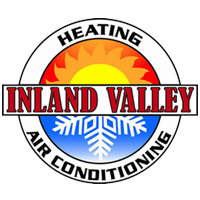Duct and furnace noise can be alarming to homeowners. However, all duct and furnace sounds aren’t indicative of a problem with the HVAC system. Often, homeowners can identify the root cause of ductwork and furnace noise by simply listening to the sounds the HVAC system makes.
– Ductwork Construction
A home’s ductwork is responsible for delivering conditioned air throughout the home. Ductwork is typically made of sheet metal and can be found in three shapes: circular, square and rectangular. The shape of the ductwork has a direct effect on the amount of pressure ducts can handle. Circular ducts can handle the most pressure, while rectangular ductwork can handle the least. Because it’s made of metal, ductwork is likely to make noise.
– Popping Noises
Many homeowners report hearing a popping noise while the HVAC system is running. Ductwork is only able to handle a certain amount of pressure without expanding. Once the air pressure in the ducts reaches this level, the sheet metal is forced to expand. Although the popping sound may be startling or bothersome, it’s not a symptom of a larger issue with the HVAC system.
Other popping noises in the ductwork may occur due to extreme temperature differences. Ducts in a cold home may pop when the heat is activated due to the change in temperature.
– Duct and Furnace Noise After Cleaning
Some homeowners experience new noises in the ductwork and furnace after having the HVAC system cleaned. During normal use, dust, debris and pollutants can accumulate in the furnace and duct system. These particles can restrict airflow, resulting in a HVAC system that’s unable to run efficiently.
Once the HVAC components are cleaned, the system is again able to achieve peak performance while using less energy. Because of this, the system is able to put additional pressure on the ductwork. The noises made by the system after a cleaning are the normal popping noises associated with the expansion of ducts.
– Booms
Gas-burning furnaces use a series of burners to heat air. When the heat is turned on, each one of the burners ignites. When a furnace becomes clogged, the ignition of one or more of the burners can be delayed from a couple seconds to a few minutes. During the delay, natural gas continues to accumulate around the burner.
Once the burner does ignite, the excess natural gas ignites as well. This can result in a small explosion which produces the “boom” sound.
Do you suspect clogged burners? Contact Inland Valley Heating & Air Conditioning, your HVAC professional immediately. Clogged burners have the potential to crack the furnace’s heat exchanger, which can result in costly repairs. Additionally, clogged burners pose a fire hazard. A qualified HVAC technition can clean the furnace and perform a maintenance check to ensure all HVAC components are working as expected.
– Whistling Noises
Whistling noises are indicative of an air leak in the home. To diagnose this, homeowners should visually inspect exposed ductwork. Damaged air ducts should be replaced and cracks should be sealed to eliminate air leaks and to increase the home’s efficiency.
If the registers and vents inside the home aren’t properly sized, air leaks can occur around the vents as well. Replacing vent covers with better-fitting options will reduce the whistling sound and increase the HVAC system’s efficiency.
Another method to reduce whistling noises is to slow down the furnace’s fan speed. This option is only available when the heat is on during cooler weather. Decreased fan speed in summer months can result in the air conditioning unit freezing.
For professional assistance diagnosing the cause of ductwork and furnace noise in your Inland Empire home, contact Inland Valley Heating & Air Conditioning today. Our Nate Certified HVAC technition provide quality Installation, Service & Repair. We’d be happy to help!
